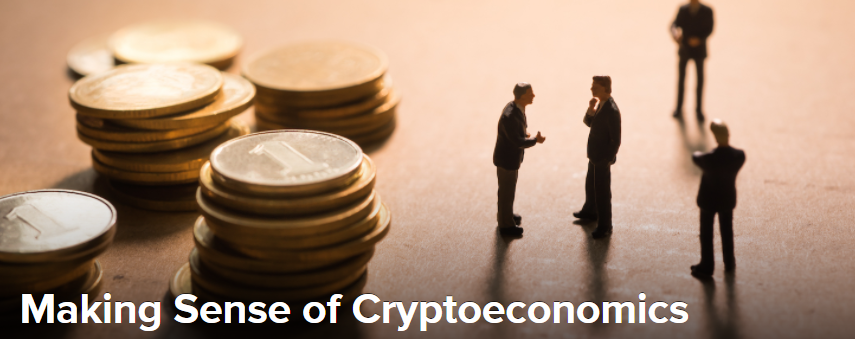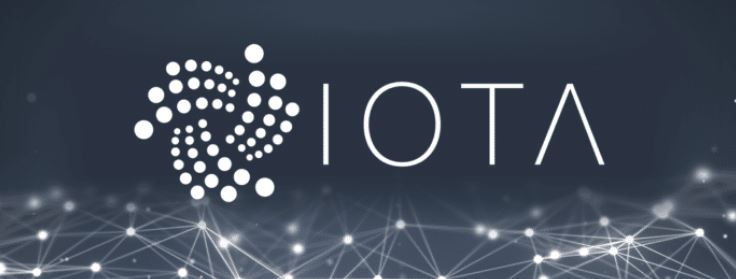EOS Digest #2 – Strategic Vision, Thoughts On Governance, And Promising Projects

EOS and Block.one made major announcements in June, celebrated one year from the mainnet launch, defended a bunch of controversies – you can get a quick recap in our previous digest. This month hasn’t brought in many catchy headlines yet, but this makes it a good moment to assess overall prospects — from minor partnership announcements to core problems that affect the EOS blockchain.
The Lumi Wallet team has picked the most important news surrounding EOS for you and broken down major think pieces ]that have recently been discussed in the EOS community.
Block.One News
As Block.one has previously stated, EOSIO v.1.8 has to be implemented by the majority of block producers to run Voice and provide other features for common EOS users, such as the announced 12x increase in transaction speed.
The stable release of v1.8 is now live on GitHub. The main features that were upgraded are the Consensus Protocol and state history plugin, also this version is ready to support Voice. To make the network run on this new protocol, BP’s and users have to conduct a full replay of the chain from genesis – after that is done (by Dan Larimer’s approximation it would take a couple of months), EOS will enjoy all the features from this upgrade without splitting the platform.
Block.one also released EOSIO Strategic Vision, a document that describes the foundational pillars of EOSIO. Here they are:
-Scalability: more apps, more users.
-Developers: better tooling, faster app development
-Users: Greater security, less friction
-Enterprise: Greater flexibility, better compliance
And seems like they are walking the walk: EOS is one of the most popular protocols for dapps, and new upgrades for users and developers alike roll out almost every week.
The latest release of this kind happened shortly after the announcement on #B1June – EOSIO released EOS Virtual Machine, their high-performance Blockchain WebAssembly interpreter. It is designed to suit the growing performance needs of blockchain applications and is specially tailored to provide extremely fast execution of on-chain processes.
It is the first shot in the battle for Virtual Machine standard between blockchains, because basically, whoever has a better suited VM for their needs, has better speeds and scalability. However, the current release is still in development and not intended for use in production environments yet.
News Bulletin
Recently there was a lot of news surrounding a wide variety of projects on EOS. Here is a quick recap:
Bithumb, the largest Korean cryptocurrency exchange, announced that it will begin participating in EOS voting. According to BTCKorea.com (the parent company of Bithumb), it will initially participate in the Block Producer vote with its own-account EOS tokens. Bithumb states that it will support BPs that contribute to the improvement of the EOS ecosystem. With Koreans owning about 10% of EOS tokens, and Bithumb, which holds the largest amounts of EOS in Korea, it is expected that the Asian disproportion in BPs will only deepen.
Switcheo launched Cross-Chain Atomic Swaps on EOS and NEO. “Atomic swap” means you have two users on different blockchains, and using the atomic swap you can make sure both transactions happen simultaneously, via smart contract. It’s called Atomic because it can’t be separated. That means, user can make the swap immediately and without endangering their funds, as the transaction is secure within a smart contract.
Dfuse, the blockchain API company, raised $3.5MUSD in seed financing led by Multicoin Capital, a thesis-driven cryptofund and global blockchain thought leader and Intel Capital. The new funds will be used to expand a cross-blockchain technology platform and grow its engineering and customer success teams. Dfuse was launched in June 2018, shortly after the launch of the EOS Mainnet. Multiple EOS projects, including pixEOS, Cypherglass, and Everipedia utilize its blockchain API, so good news and investments in this platform influence the whole ecosystem in a positive way.
Dmail, a messaging platform built on EOS and Chintai, a token leasing platform powered by EOSIO smart contracts, come together to enhance UX and make the entire process seamless, so that users won’t have to manage their resources manually and will get notifications about the movements of their funds automatically.
pEOS, the smart contract implementation of a privacy token that is based on the technology that powers the anonymous cryptocurrency Monero, announced that they are allocating 25% of their total incentive funds in PEOS tokens to the new pEOS Privacy Fund. This new fund is meant to support third-party, privacy-oriented projects and they invite teams with such projects to contact them. Also, on the 30th of June, the first transaction of PEOS using a Ring Signature was spotted.
Effect.ai, a decentralized platform for Intelligence development and AI related services, started working with the Australian and New Zealand governments. The project outline is broken in to a three-phase overlapping rollout to help build, monetize, and then run artificial intelligence solutions. At this stage of construction it basically provides independent contractors with tasks to train AI algorithms, so the more big entities that participate, the more tasks there are for independent contractors. Now they have successfully finished the pilot program in the country of Georgia and are already structuring satellite imagery for the government of Singapore, essentially building their own Google Maps. The public release of Effect.ai is scheduled for July 10th.
Everipedia, a wiki-based online encyclopedia on the blockchain, has announced the official rollout of the Everipedia 2.0 public beta on everipedia.org. Everipedia 2.0 has been rebuilt from the ground up and has reworked user interface using React. Developers state it significantly increased the speed, performance, and usability of the service.
VOTING
The EOS governance debates are still in progress. In the previous digest we went over the existing proposals from the 1 token one, 1 vote concept to Dan Larimer’s proposal to pay users to not vote.
Recently Dan wrote two articles on his medium blog that meditate on general government issues and point out several possible solutions for them. Both were based on the assumption that most of the systems that include humans tend to distribute power according to the Pareto principle (also known as the 80/20 rule).
The first one sketches out what a good governance system is and why even modern democracy is far from ideal. The main point is that it doesn’t matter which metric you use to choose your leaders – if there is only one competition, like popular vote, it is not prone to be rigged in favor of the minority which will suppress the majority. And this is the basis for tyranny.
The only way to ensure that the fittest for the job get the office is to have thousands of competitions in different fields that would select the best for each field, not just the best at mass deceit. The key to the decentralization of governance is keeping it open to new people and avoiding creating entry barriers that are biased toward any single minority.
Regarding blockchain governance, if its governance is based on any single metric, whether proof-of-stake or proof-of-work, it will become dominated by the entrenched few who are most adept. However, having a lot of metrics provides more Pareto distributions, and the more independent those distributions are, the more decentralized the network will become. And blockchains based upon any single proof-of-x metric will become centralized even if those in power spread propaganda about how decentralized the system is.
In the second article, Dan states that vote-buying results in centralization due to economies of scale. While the blockchain may know about 21 producers, it has no way to enforce those producers to operate on independent hardware. He also points out that this problem isn’t unique for the EOS blockchain: the same is true for Bitcoin mining pools. There can be several “pools of record”, but nobody can guarantee that there isn’t a single node behind it.
Considering that he comes with the proposal of dividing the existing 21 producers into 4 categories, choosing them with the addition of new metrics and therefore new Pareto distributions. He suggests achieving this by:
- Giving RAM voting weight
- Giving Stake-Time Voting weight
- Giving Infinite Stake-Time (essentially, volunteer token-burning) voting weight
- Rewarding non-voting users
Producers would be voted according to this scheme:
– 8 producers voted by EOS Staked^2
– 8 producers voted by Days staked * EOS staked^2
– 3 producers voted by RAM holders
– 2 producers voted by (avg EOS burned / Day)^2
This proposal seems to successfully develop the idea of 1 token 1 vote, widely supported by EOS community, merging it with Dan’s previous proposal to pay users to not vote. Still, it looks like the debates about the governance system are far from over – and while it stays a major issue for the EOS blockchain’s credibility and very existence, it seems we’ll continue to revisit this topic.
Dive Into EOS
Being a constantly developing blockchain with a handful of projects blossoming on it, EOS seems very complicated for a newcomer at first glance. Therefore, the community is trying to give an introduction to the EOS basics in as simple terms as possible. For anyone who feels like they’re floating in all the terms and ideas, here is a nicely put-together EOS Handbook that can give a quick boot camp on all things regarding this rookie blockchain.











Responses